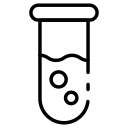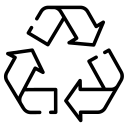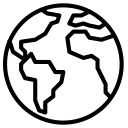Candidates
TU Delft Impact Contest

OPAL (semi-finalist)
Modern workspaces lack lighting that supports our natural rhythms, disrupting the balance between work and rest. Poorly designed lighting fails to energize us during the day or prepare us for rest at night, leading to fatigue, reduced productivity, and long-term health issues. This imbalance creates a disconnect from the natural flow of light our bodies crave, leaving us drained and unfocused. The result? A workforce struggling to perform at its best, both mentally and physically, in environments that ignore the profound impact of biologically effective light on our well-being.
Read moreInfrastructure monitoring software (InfraDCM) (semi-finalist)
Current methods for infrastructure monitoring are costly, time-consuming, and frequently destructive. Typically, road authorities must undertake multiple steps, including halting traffic, drilling core samples from road surfaces, conducting at least three stages of laboratory testing on the samples, retrieving raw experimental data, and consulting experts for data analysis. Based on this analysis, the experts eventually provide a corrective maintenance plan, which is often delayed and expensive. In the Netherlands, this process costs approximately 3.3 billion euros annually. It represents a continuous burden for road authorities such as Rijkswaterstaat (RWS), municipalities, and contractors.
Read moreB.O.L.D. – Building Optimization for Lasting Development
The Netherlands has a vast stock of existing residential buildings that present untapped opportunities for energy-efficient renovations. However, evaluating the renovation potential and assessing the financial viability of these projects is complex. Developers and housing associations face challenges in making data-driven decisions that balance renovation costs, energy efficiency, and long-term value. B.O.L.D. addresses these challenges by providing optimized renovation scenarios, enabling stakeholders to make informed, strategic decisions. Our solutions help assess risks and opportunities, ensuring cost-effective, sustainable renovations that enhance building performance and support long-term investment success.
Read moreOn the road
Many travelers, especially solo young women, experience anxiety when navigating unfamiliar transit systems due to language barriers and hesitation in asking for help. The fear of miscommunication or safety concerns often discourages them from approaching strangers, making their journeys stressful and isolating.
Read moreForgeX
Veel productieprocessen, zoals verspaning, PCB-productie en spuitgieten, worden grotendeels uitbesteed aan lageloonlanden. Dit leidt tot een afhankelijkheid van externe markten, hogere logistieke kosten en minder controle over productie. Daarnaast stijgen de lonen in Europa, waardoor productie minder rendabel wordt. Door efficiëntere processen en slimmere productiesystemen kunnen we de productiekosten verlagen en lokale maakindustrie concurrerender maken. Bovendien kan dit bijdragen aan een lagere CO₂-uitstoot, doordat productie dichter bij de eindgebruiker plaatsvindt en minder transport nodig is.
Read moreParaSolar (semi-finalist)
ParaSolar transforms existing surfaces, such as parasols, into energy sources by seamlessly integrating solar cells. We make sustainable energy accessible without taking up extra space.
Read moreParalas: Autonomous Drone-Based Inspection of Offshore Wind Turbines
Offshore wind turbines play a vital role in generating renewable energy but are located in remote and harsh marine environments. To ensure they operate efficiently, regular inspection and maintenance are essential. Currently, the industry depends on helicopters and ships to transport personnel to these turbines. This approach is slow, expensive, emits significant carbon emissions, and poses considerable safety risks. When a turbine requires inspection—due to bird strikes, storm damage, or routine wear—a complex logistical operation is needed to bring crews to the site. Technicians often have to rappel down turbine blades or manually operate drones on-site, necessitating their physical presence on the turbine. This exposes them to hazardous conditions, including unpredictable weather and the dangers of working at great heights over open water. The financial costs are substantial. Deploying helicopters and ships involves high fuel consumption, crew wages, and maintenance expenses. Coordinating these missions demands meticulous planning, factoring in weather conditions and equipment availability. Delays are common, leading to turbines being offline longer than necessary, resulting in lost energy production and revenue. As offshore wind farms expand—some with over 100 turbines spread across hundreds of square kilometers—the inefficiencies and costs escalate dramatically. Environmental impact is another significant concern. Using fossil fuel-powered helicopters and ships generates considerable carbon emissions, undermining the environmental benefits of wind energy. This contributes to global greenhouse gas emissions and contradicts the core objective of renewable energy projects: providing clean and sustainable power. Safety risks are inherent in the current approach. Transporting personnel over open seas and having them work on towering structures exposes them to significant dangers. Accidents can result from falls, equipment failures, or incidents during transit. The industry has recorded numerous safety incidents, leading to increased scrutiny and a pressing need for better protective measures. In summary, existing methods for offshore wind turbine inspection are unsustainable due to high costs, environmental impact, and safety hazards. There is an urgent need for innovative solutions that reduce operational expenses, minimize emissions, and enhance personnel safety.
Read moreHoly Folie
After the war in Ukraine, energy prices in Europe and the Netherlands rose significantly, worsened by the extreme cold of winter 2022. This has made home sustainability more urgent, yet student housing is often overlooked. The Social Impact Hub aims to address this by improving sustainability in student homes and raising awareness of energy consumption. Many student houses are in historic buildings with strict renovation rules, making insulation difficult. Students, who stay temporarily, often see little reason to invest, while landlords lack incentives since students pay the bills. This creates a gap that requires targeted solutions.
Read moreThe Synergy Hub (semi-finalist)
We notice that teams in organisations are not harnessing the full potential of collaboration. Things like lack of vision and strategy, team misalignment, trust, defensiveness, and narcissism lead to reduced productivity and growth at best and destructive effects, at worst. Organisations and teams therefore suffer from underperformance and inefficiency, while also having members who are stressed, feeling disconnected, not feeling empowered, unable to be creative, and not feeling safe and included within their teams and organisations. Even if constructive conditions exist, collaborations still face hurdles to reach their full potential. This ultimately has an impact not only on the individuals, teams, and organisations, but on the society as a whole that would bear the costs of having members who are not thriving, happy and fulfilled.
Read moreCovibo (semi-finalist)
In civil engineering projects, poor communication between clients and contractors often leads to delays, confusion, and even conflicts. A significant part of this issue stems from a lack of understanding of contractual obligations, ambiguity about the project scope, and mismatched expectations between both parties. This disruption in the planning, execution, and delivery stages increases the risk of project failure.
Read more











